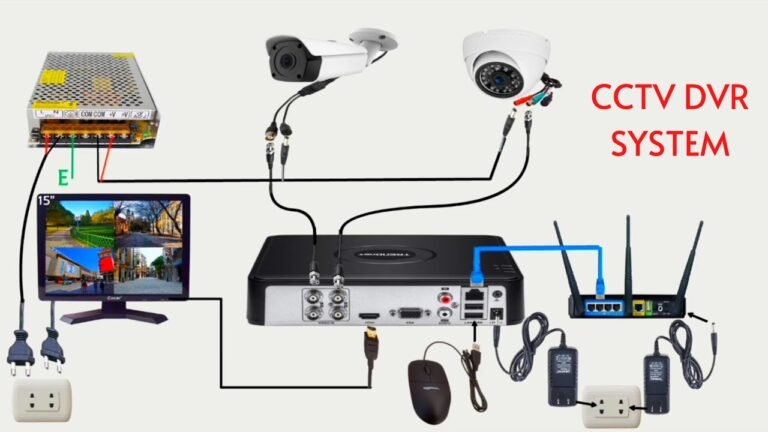How DVR Works With CCTV

CCTV installation is a critical step in setting up an effective surveillance system, ensuring that cameras are positioned and configured to maximize coverage and functionality. Proper installation not only enhances security but also ensures that the system operates reliably and efficiently over time. The process involves several key stages, from planning and equipment selection to actual setup and testing.
The first step in CCTV installation is thorough planning. This involves assessing the areas that need monitoring, identifying potential security threats, and determining the optimal placement of cameras. Factors such as the field of view, lighting conditions, and potential obstructions must be considered to ensure comprehensive coverage. A site survey can be particularly useful in mapping out camera locations and planning cable routes to minimize interference and maximize effectiveness.
Selecting the right equipment is another crucial aspect of CCTV installation. This includes choosing cameras with appropriate features such as resolution, night vision, and weatherproofing for outdoor use. Additionally, the choice of recording devices, such as DVRs (Digital Video Recorders) or NVRs (Network Video Recorders), depends on whether the system uses analog or IP cameras. Other essential components include cables, power supplies, and mounting hardware.
Once the planning and equipment selection phases are complete, the actual installation begins. Cameras should be mounted securely at strategic points to cover all critical areas without leaving blind spots. The installation height and angle should be adjusted to capture clear images and avoid obstructions. Wiring must be carefully routed and concealed to prevent tampering and ensure a neat appearance. Power sources and backup systems should also be installed to maintain continuous operation in case of power outages.
Configuring the system is the next step, involving setting up the recording devices, configuring camera settings, and integrating the system with any existing security infrastructure. This may include setting motion detection zones, configuring alerts, and ensuring remote access capabilities are enabled for monitoring from smartphones or computers.
Finally, thorough testing is essential to confirm that the CCTV system is functioning correctly. This includes checking the camera angles, ensuring clear image quality, and verifying that recording and playback features are working as expected. Regular maintenance and periodic checks should also be scheduled to ensure the system remains in optimal condition.
In conclusion, CCTV installation is a multifaceted process that requires careful planning, the right equipment, and precise execution. By following these steps, property owners can ensure their surveillance systems provide effective security and peace of mind. As technology evolves, staying updated with the latest advancements can further enhance the effectiveness of CCTV installations.
